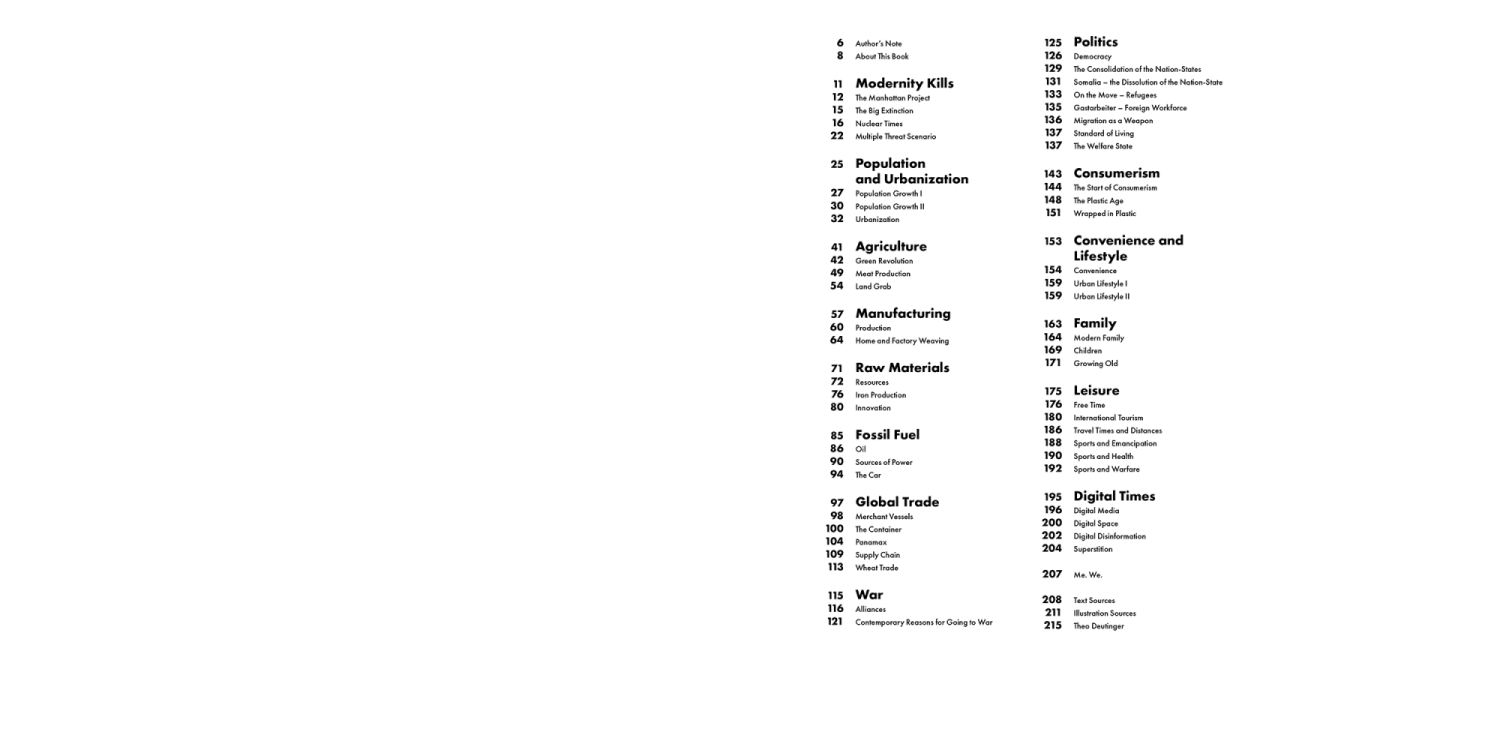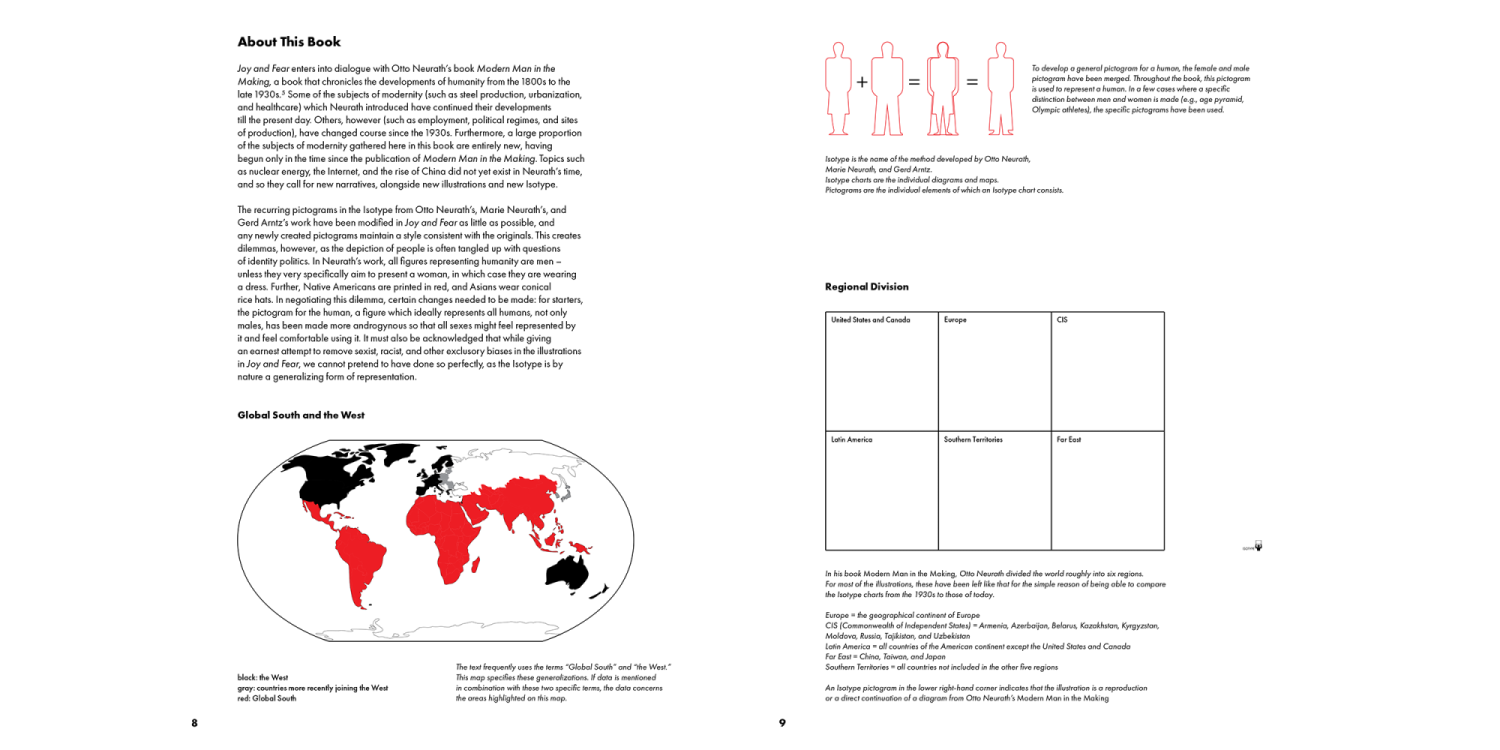
Joy and Fear
A continuation of Otto Neurath’s 1939 book Modern Man in the Making, Joy and Fear questions how modernity, through its promises and failures, continues to reshape mankind. The promises have been fulfilled, especially for people in the West, where hygiene, modern medicine and education have led to steep increases in health, life expectancy and literacy rates. For large parts of the world’s population, however, these promises have not been fulfilled. The current average life expectancy in Chad, for example, is equal to that of the United States in the 1920s, and at 52 is eight years below the retirement age there. The entire globe is unquestioningly and irreversibly involved in the modern project, but its benefits are very unevenly distributed.
By depicting these asymmetries, Joy and Fear brings clarity to today’s modern world. The pictograms and illustrations and their accompanying texts touch on global issues ranging from agriculture to warfare to the welfare state. The visual language makes complex issues immediately accessible. Holding the various themes together is a coherent narrative.
A continuation of Otto Neurath’s 1939 book Modern Man in the Making, Joy and Fear questions how modernity, through its promises and failures, continues to reshape mankind. The promises have been fulfilled, especially for people in the West, where hygiene, modern medicine and education have led to steep increases in health, life expectancy and literacy rates. For large parts of the world’s population, however, these promises have not been fulfilled. The current average life expectancy in Chad, for example, is equal to that of the United States in the 1920s, and at 52 is eight years below the retirement age there. The entire globe is unquestioningly and irreversibly involved in the modern project, but its benefits are very unevenly distributed.
By depicting these asymmetries, Joy and Fear brings clarity to today’s modern world. The pictograms and illustrations and their accompanying texts touch on global issues ranging from agriculture to warfare to the welfare state. The visual language makes complex issues immediately accessible. Holding the various themes together is a coherent narrative.
















